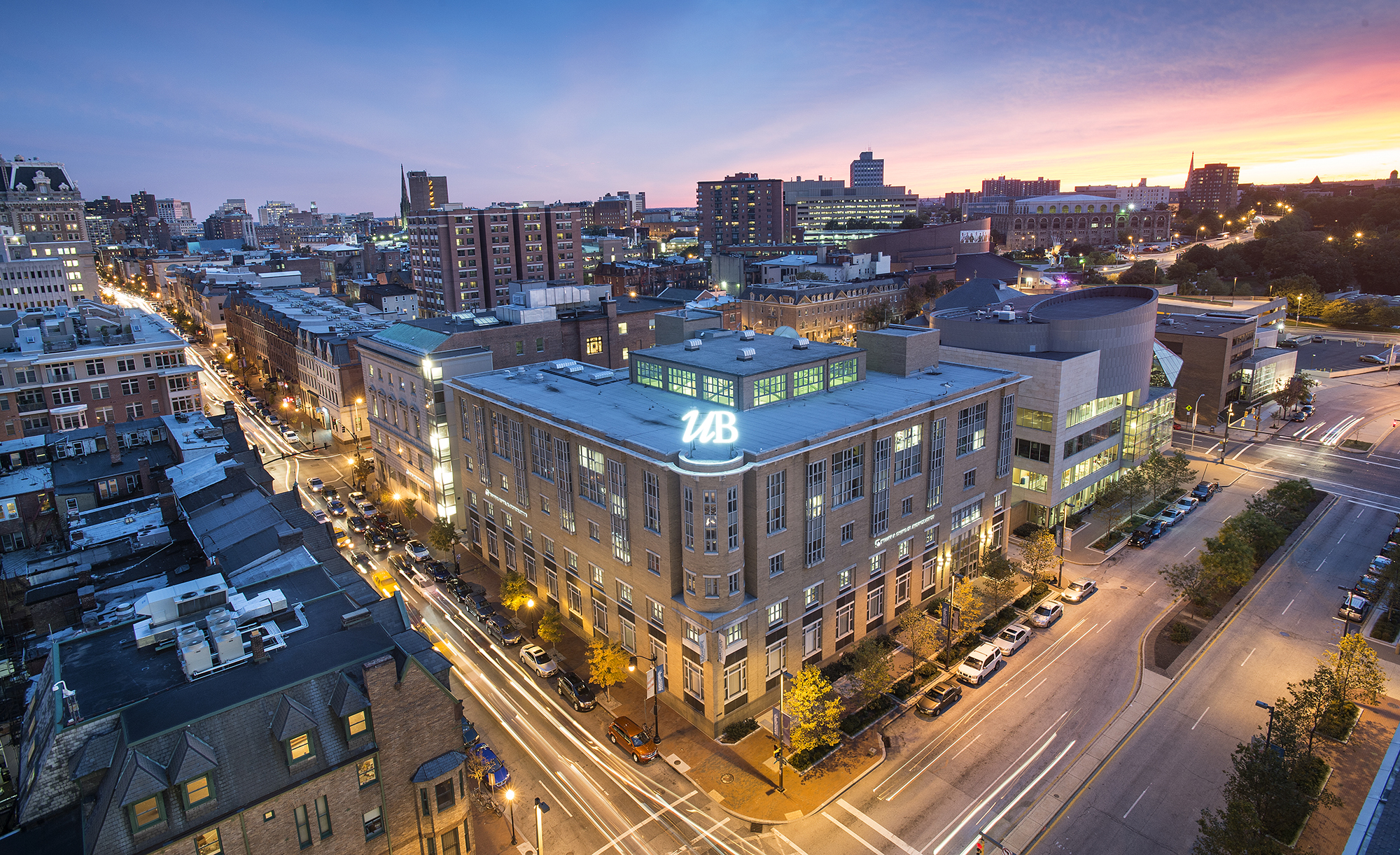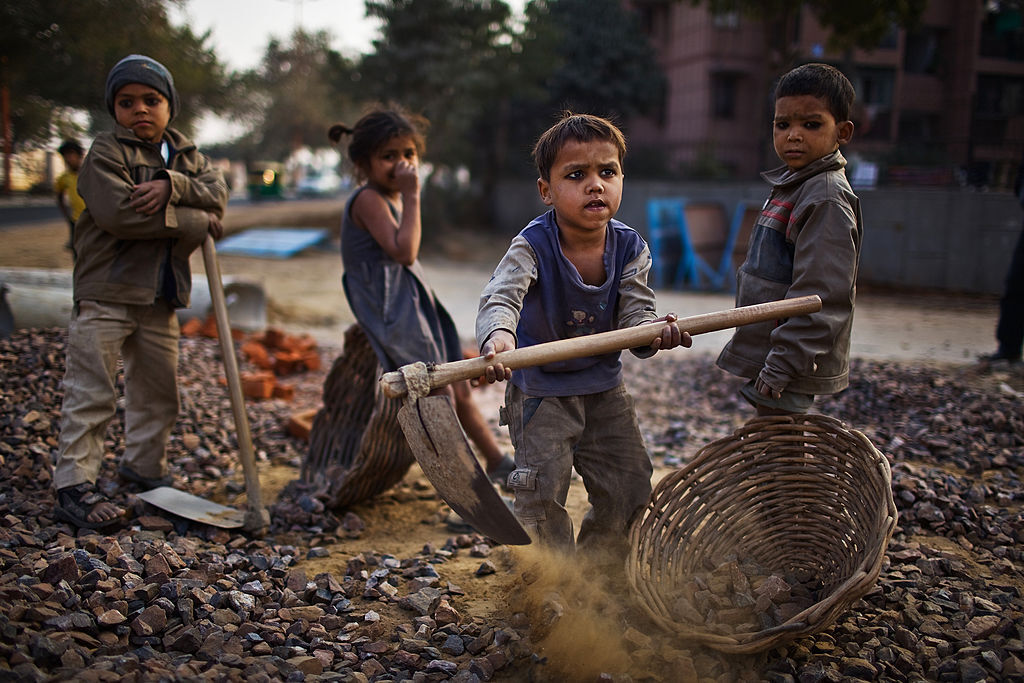Report on Youth Safety Perceptions in Detroit and Alignment with Sustainable Development Goals
This report analyzes the perspectives of Detroit youth regarding safety in their schools and communities. The findings highlight significant challenges that directly intersect with several United Nations Sustainable Development Goals (SDGs), particularly those concerning health, education, sustainable communities, and justice. While official data may indicate a decline in violent crime, the subjective experience of fear and anxiety remains a critical barrier to youth development.
SDG 3: Good Health and Well-being
Mental Health Impacts of Pervasive Fear
A primary finding is the profound negative impact of safety concerns on the mental well-being of young people. The constant threat of violence, both perceived and real, contributes to significant psychological distress, undermining progress toward SDG 3.
- Chronic Anxiety: Students report persistent feelings of being “on edge,” overthinking potential dangers, and experiencing anxiety in large crowds or unfamiliar situations.
- Trauma from Violence: Exposure to fights, gunshots, and community violence contributes to lasting trauma. The normalization of these events is a significant concern, as it can inhibit the ability to recognize and respond to unsafe situations.
- Need for Support Systems: Youth express a critical need for accessible mental health resources. Community organizations and peer-led “healing circles” are identified as vital “second families” that provide safe spaces for emotional expression and trauma processing.
SDG 4: Quality Education
How Insecurity Impedes Educational Attainment
The lack of a safe and secure environment directly compromises the delivery and reception of quality education, a cornerstone of SDG 4. Fear and inadequate facilities create substantial barriers to learning.
- Threat-Related Absenteeism: Students report missing school on days when threats of violence, often circulated on social media, are made against their school.
- Unconducive Learning Environments: Beyond violence, poor physical infrastructure poses a safety risk. Reports include:
- Falling ceiling tiles
- Broken windows leading to extreme temperatures
- Unsanitary lunchrooms
- Erosion of Safety Protocols: Some students observe a casual attitude among peers during safety drills, suggesting a desensitization to threats that undermines preparedness and the overall safety culture.
SDG 11: Sustainable Cities and Communities
Challenges in Creating Safe and Inclusive Public Spaces
The report indicates a failure to provide safe, inclusive, and accessible public spaces for youth, a key target of SDG 11. Both school campuses and community areas are perceived as unpredictable and potentially dangerous.
Identified Unsafe Environments
- School Campuses: Incidents of external individuals bringing weapons onto school grounds create significant fear, even when de-escalated effectively.
- Public Transportation and Commutes: Students feel vulnerable while using public transport or walking to school, relying on self-imposed rules like not speaking to strangers.
- Community Parks and Public Areas: Recreational spaces are often compromised by illicit activities such as reckless driving, drag racing, and the presence of drug needles, making them unsafe for their intended use.
- Lack of “Third Spaces”: A recurring theme is the absence of safe, structured, and positive places for youth to congregate, which can lead to conflict arising from a lack of productive outlets.
SDG 16: Peace, Justice and Strong Institutions
Violence, Justice, and Institutional Trust
Youth experiences reflect deep-seated issues related to violence, justice, and trust in institutions like schools and law enforcement, which are central to SDG 16.
Forms of Violence and Institutional Response
- Gun Violence: A pervasive fear of school shootings and neighborhood gun violence is a top concern, affecting mental health and daily routines.
- Physical Conflict: Fights and bullying, both in-person and exacerbated by social media, are common sources of anxiety.
- Relationship with Law Enforcement: There is significant distrust of the police.
- Fears that police intervention could worsen a situation.
- Concerns about mistaken identity due to facial recognition technology.
- In the Hispanic community, fear of police is compounded by fear of Immigration and Customs Enforcement (ICE), leading to a reluctance to report crimes.
Defining True Safety
Students distinguish between security measures (metal detectors, locked doors) and true safety. True safety is defined as a feeling of comfort, trust, and the ability to express oneself without judgment, rather than the mere presence of physical deterrents.
SDG 1, 5, 10: Intersectional Concerns of Inequality and Vulnerability
The perceptions of safety are not uniform and are deeply affected by intersecting identities, highlighting challenges related to reducing inequalities (SDG 10), promoting gender equality (SDG 5), and ending poverty (SDG 1).
- Gender and Race (SDG 5): Young Black women express a heightened sense of vulnerability, noting that interactions can become unsafe due to a combination of their race and gender.
- Immigration Status (SDG 10): Fear of ICE creates a unique barrier to safety and justice for Hispanic community members, fostering deep distrust in all forms of law enforcement.
- Homelessness (SDG 1): Youth experiencing homelessness face compounded insecurities. Support centers providing basic needs like housing, food, and hygiene are crucial first steps toward establishing physical, mental, and emotional safety.
Proposed Solutions and Pathways Forward
Based on the testimony of youth and their advocates, the following solutions are proposed to address these multifaceted safety issues and advance the Sustainable Development Goals:
- Enhance Mental Health Support: Increase the availability of counselors and mental health resources within schools and create more community-based healing spaces.
- Invest in Safe “Third Spaces”: Develop and fund safe, structured, and youth-led community centers and programs that provide productive outlets for self-expression and conflict resolution.
- Improve School Infrastructure: Address the physical decay of school buildings to ensure they are safe and conducive to learning, as advocated by student-led coalitions.
- Promote Community-Police Dialogue: Organize workshops and community events to build trust and understanding between youth and law enforcement.
- Foster Emotional Intelligence: Implement programs that help youth understand and manage their emotions, providing them with tools for non-violent conflict resolution.
- Strengthen Community Bonds: Encourage initiatives that connect community members to one another, fostering a collective responsibility for mutual protection and safety.
Analysis of Sustainable Development Goals in the Article
1. Which SDGs are addressed or connected to the issues highlighted in the article?
-
SDG 3: Good Health and Well-being
The article directly connects the fear of violence to the mental health of young people. Students express how constant worry about their safety leads to anxiety and stress, impacting their overall well-being.
-
SDG 4: Quality Education
The quality of education is compromised when students do not feel safe. The article highlights how unsafe school facilities, threats of violence, and bullying create a learning environment that is not conducive to effective education. Students missing school due to threats directly impacts their access to education.
-
SDG 5: Gender Equality
The article touches upon the specific safety concerns faced by young women. Angelica Williams explicitly mentions feeling unsafe as a “young Black girl” and describes situations where she feels vulnerable to harassment from men in public spaces, highlighting a gendered dimension to safety.
-
SDG 11: Sustainable Cities and Communities
The issues discussed extend beyond school walls into the community. The article addresses the lack of safe public spaces (parks, community centers), unsafe public transportation, and youth homelessness, all of which are critical components of a sustainable and inclusive city.
-
SDG 16: Peace, Justice and Strong Institutions
This is the most central SDG in the article. The core themes revolve around reducing violence, including gun violence, bullying, and fighting. It also explores the community’s relationship with institutions like the police, discussing issues of distrust and the need for stronger community-police bonds to ensure safety and justice for all.
2. What specific targets under those SDGs can be identified based on the article’s content?
-
SDG 3: Good Health and Well-being
- Target 3.4: By 2030, reduce by one third premature mortality from non-communicable diseases through prevention and treatment and promote mental health and well-being.
Explanation: The article emphasizes the mental health aspect of this target. Students like Natalina Cawthon state that fear of violence affects their mental health, causing them to “overthink it.” Ja’Nya Street points out that schools “don’t have enough mental health resources,” directly linking the lack of support systems to student well-being.
- Target 3.4: By 2030, reduce by one third premature mortality from non-communicable diseases through prevention and treatment and promote mental health and well-being.
-
SDG 4: Quality Education
- Target 4.a: Build and upgrade education facilities that are child, disability and gender sensitive and provide safe, non-violent, inclusive and effective learning environments for all.
Explanation: This target is relevant through descriptions of both physical and emotional safety in schools. Paola Negrete reports on unsafe physical conditions like “ceiling tiles falling down, broken windows.” The pervasive fear of gun violence, described by Dulce Bravo, and bullying, mentioned by Tristian Grant, demonstrates the lack of a “safe, non-violent, inclusive and effective learning environment.”
- Target 4.a: Build and upgrade education facilities that are child, disability and gender sensitive and provide safe, non-violent, inclusive and effective learning environments for all.
-
SDG 5: Gender Equality
- Target 5.2: Eliminate all forms of violence against all women and girls in the public and private spheres.
Explanation: Angelica Williams’ testimony supports this target. She describes feeling unsafe as a “young Black girl,” especially in public spaces like gas stations at night where she has been harassed by men. This illustrates the threat of violence and harassment that women and girls face in public.
- Target 5.2: Eliminate all forms of violence against all women and girls in the public and private spheres.
-
SDG 11: Sustainable Cities and Communities
- Target 11.1: By 2030, ensure access for all to adequate, safe and affordable housing and basic services and upgrade slums.
Explanation: Armani Arnold’s experience of being “in and out of homelessness” and finding support at the Detroit Phoenix Center, which provides “housing assistance, food, and hygiene necessities,” directly relates to the need for safe and adequate housing for vulnerable youth. - Target 11.2: By 2030, provide access to safe, affordable, accessible and sustainable transport systems for all.
Explanation: Tiarra Hall discusses her safety strategy while using public transportation to get to school, highlighting that safety on these systems is a concern for students. - Target 11.7: By 2030, provide universal access to safe, inclusive and accessible, green and public spaces, in particular for women and children, older persons and persons with disabilities.
Explanation: The article points to a lack of safe public spaces. Alexis Escoto feels unsafe in his community park due to “drag racing” and “drug needles.” Multiple speakers, including Angelica Williams and Camille Hollenquest, mention the need for “safe space[s] to congregate” or “third spaces” for youth.
- Target 11.1: By 2030, ensure access for all to adequate, safe and affordable housing and basic services and upgrade slums.
-
SDG 16: Peace, Justice and Strong Institutions
- Target 16.1: Significantly reduce all forms of violence and related death rates everywhere.
Explanation: This target is central to the article. Students express fear of various forms of violence, from fights mentioned by Tristian Grant to the “ever-present threat of gun violence at school” described by Dulce Bravo. The fear of random community violence, such as a “drive-by while I’m at the park,” is a major concern for Ayme Head. - Target 16.2: End abuse, exploitation, trafficking and all forms of violence against and torture of children.
Explanation: This target is relevant through the discussion of bullying and its effects. Tristian Grant describes being bullied, and Ja’Nya Street connects bullying to severe consequences, noting, “You never know who’s getting bullied.” This highlights a specific form of violence against children that occurs within the school environment.
- Target 16.1: Significantly reduce all forms of violence and related death rates everywhere.
3. Are there any indicators mentioned or implied in the article that can be used to measure progress towards the identified targets?
-
For Target 3.4 (Promote mental health and well-being):
- Indicator: Student self-reported levels of fear, anxiety, and stress due to safety concerns (e.g., Natalina Cawthon’s statement, “Sometimes I just overthink it”).
- Indicator: Availability of and access to mental health resources and support staff in schools (e.g., Ja’Nya Street’s observation that schools “don’t have enough mental health resources”).
- Indicator: Existence of community-based support systems and “safe spaces” for youth to discuss mental health (e.g., the work of Detroit Heals Detroit).
-
For Target 4.a (Provide safe learning environments):
- Indicator: Number of school days missed by students due to safety threats (e.g., Dulce Bravo missing school on days of specific threats).
- Indicator: Student perception of safety within school buildings (e.g., Dulce Bravo feeling safe “only half of the time”).
- Indicator: Number of reported incidents of unsafe physical conditions in schools (e.g., Paola Negrete’s reports of “ceiling tiles falling down, broken windows”).
-
For Target 5.2 (Eliminate violence against women and girls):
- Indicator: Proportion of young women and girls who report feeling unsafe in public spaces (e.g., Angelica Williams’ anxiety at gas stations).
- Indicator: Number of reported incidents of public harassment against women and girls.
-
For Target 11.1 (Access to safe housing):
- Indicator: Rate of homelessness or housing instability among youth (e.g., Armani Arnold’s personal history).
- Indicator: Capacity of support centers providing housing assistance to youth (e.g., the services of the Detroit Phoenix Center).
-
For Target 11.7 (Access to safe public spaces):
- Indicator: User perception of safety in community parks and public areas (e.g., Alexis Escoto feeling unsafe in his park).
- Indicator: Availability of and participation in youth-centered “third spaces” for safe congregation.
-
For Target 16.1 (Reduce all forms of violence):
- Indicator: Student perception of the risk of gun violence in their school and community (a concern for Dulce Bravo, Natalina Cawthon, and others).
- Indicator: Number of reported fights and violent incidents in and around schools.
- Indicator: Prevalence of online threats and drama that contribute to real-world conflict (a concern for Tristian Grant).
-
For Target 16.2 (End violence against children):
- Indicator: Prevalence of bullying in schools as reported by students (e.g., the experiences of Tristian Grant and concerns of Ja’Nya Street).
4. Table of SDGs, Targets, and Indicators
| SDGs | Targets | Indicators Identified in the Article |
|---|---|---|
| SDG 3: Good Health and Well-being | 3.4: Promote mental health and well-being. |
|
| SDG 4: Quality Education | 4.a: Build and upgrade education facilities and provide safe, non-violent, inclusive and effective learning environments. |
|
| SDG 5: Gender Equality | 5.2: Eliminate all forms of violence against all women and girls in the public and private spheres. |
|
| SDG 11: Sustainable Cities and Communities | 11.1: Ensure access for all to adequate, safe and affordable housing. |
|
| 11.2: Provide access to safe, affordable, accessible and sustainable transport systems for all. |
|
|
| 11.7: Provide universal access to safe, inclusive and accessible, green and public spaces. |
|
|
| SDG 16: Peace, Justice and Strong Institutions | 16.1: Significantly reduce all forms of violence and related death rates everywhere. |
|
| 16.2: End abuse, exploitation, trafficking and all forms of violence against and torture of children. |
|
Source: chalkbeat.org







